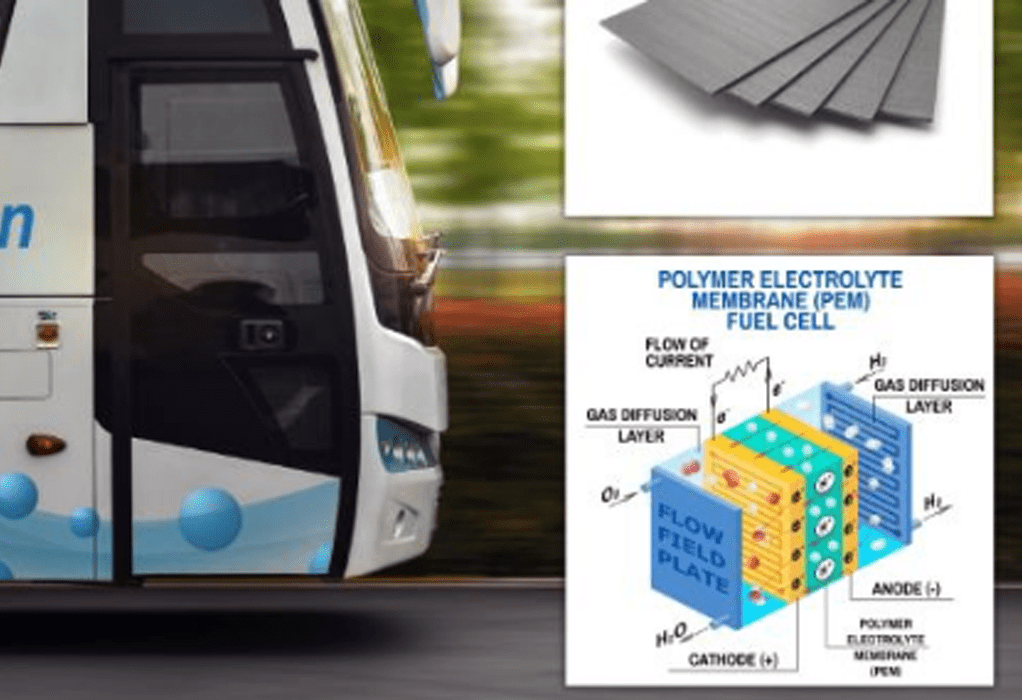Developer and manufacturer of high-performance natural and synthetic graphite sheets, NeoGraf Solutions, has been awarded a $2mn grant by the US Department of Energy (DOE) for the development of graphite bipolar plates for heavy-duty fuel cell applications.
NeoGraf says it will use the grant to develop flexible, low-cost bipolar plates for heavy-duty fuel cell applications within the US trucking and mass transportation sectors.
Bipolar plates are a key part of the electrical circuitry of a fuel cell stack. Currently, they are primarily used in buses in China and for material handling applications in North America, but the DOE aims to expand fuel cell use in the trucking and transportation industries.
“This important award validates NeoGraf’s technology and its potential use in next-generation fuel cell materials,” commented Andy Reynolds, CEO of NeoGraf Solutions. “Fuel cell technology is growing at an exponential pace as global environmental demands increase, requiring companies to keep pace with cutting-edge technology that enhances productivity and eliminates waste.”
To support the development of fuel cells for heavy-duty applications, such as those within the commercial sector, the DOE has been investing in technologies that expand hydrogen infrastructure and create fuel cell systems that are cost-competitive at high volumes.
NeoGraf’s proposal focuses on the development of flexible graphite that supports cost targets and high-volume manufacturing requirements. One of the project’s main goals is to reduce the cost of bipolar plate graphite for next-generation heavy-duty fuel cell applications by developing thin, durable, flexible graphite. The technology will enable progress toward meeting 2030 system-level heavy-duty truck targets of US$80/kW system costs and a 25,000-hour durability target.
“The success of this project depends on our ability to produce low basis weight, thin, flexible graphite with very low content of leak-inducing impurities,” added Reynolds.
The three-year project is scheduled to begin at the end of the year, with Ballard Power Systems to participate by converting the NeoGraf graphite material into bipolar plates. NeoGraf will then demonstrate that the fuel cell stack’s performance meets heavy-duty application requirements.
Source: https://www.enginetechnologyinternational.com/
Tags: Bipolar Plates, Commercial Vehicle, Fuel Cell, NeoGraf, Transport Sectors



Recent Posts
GCMD Publishes Insights from Landmark Ammonia Transfer Trial Off Western Australia
GEODIS Releases 2024 Activity and Sustainability Report, Reaffirms Climate Commitment
Strengthening India-Norway maritime ties at Nor-Shipping 2025
Magenta Mobility appoints Nand Kumar Sharma to lead charging infrastructure & projects
CMA CGM Showcases Strategic Maritime Initiatives with India During Secretary MoPSW’s Visit to Marseille
Port of Brisbane Unveils Vision 2060 to Drive Smarter, Cleaner, and More Connected Future
Wärtsilä to Deliver Hybrid Propulsion Systems for Vertom Group’s New Low-Emission Vessels
Latvian port receives electric Konecranes Gottwald Mobile Harbor Crane